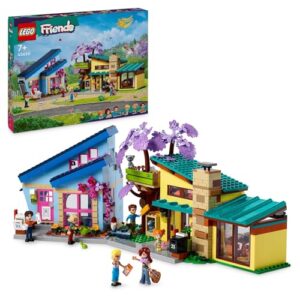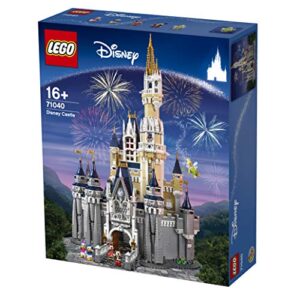Childhood
Facing the adventure of parenting in life, or providing care to a growing, extraordinary human, is a miraculous experience that requires an immense understanding of the “growing up process”. Childhood is the stage from early toddlerhood to pre-adolescence (ages 1 to 12) where physical, mental and emotional development occurs so rapidly that you begin to comprehend the phrase “time flies”. In this comprehensive guide we will delve into the the many areas of childhood. This will include the multitude of developmental milestones, the creation of a nurturing and educational environment for your child, and valuable advice for parents, caregivers and educators.

Physical Development
Early Years (1-3 years)
Motor Skills Mastery
When children reach the age of 1, exploration and curiosity take the forefront of their minds. This is the time where they set out to refine their coordinated movements. Activities like crawling, walking, exploring their surroundings develop gross motor skills. Sensory, cognitive and movement based activities and games are great during this time for fine motor skills. Examples could include finger gymnastics and hand massages, books and toys that work with small muscles, working with shoelaces and puzzles etc.
Foundations of Nutrition
During this time, making sure to eat a well-balanced diet full of essential nutrients is very important. Appropriate nourishment fills in as the bedrock for the actual advancement of bones, muscles, and organs.
Middle Childhood (4-7 years)
Gross Motor Skill Refinement
Middle Childhood is the time when children begin to engage in more coordinated physical activities and sports. Interacting with other children and being around playground areas. This phase is when agility and coordination develops. Signing your child up for a sport such as football, dance, gymnastics or basketball or creating at home activities inclusive of hopscotch, obstacle courses or scavenger hunts could be a great way to guide your child through this time.
Fine Motor Skill Precision
During middle childhood, activities like drawing 2D or 3D, writing, and manipulating small objects contribute to the development of fine motor skills. Continuing to engage in activities from the child’s early years and including more complex ones, such as beading, threading, playdough and LEGO construction, could be a way to increase the level of difficulty which in turn will help develop these skills further.
Late Childhood (8-12 years)
Navigating Puberty and Growth Spurts
The onset of puberty, which marks the beginning of significant physical changes like the development of secondary sexual characteristics and growth spurts, occurs in late childhood.
Emphasis on Physical Activity
Empowering and working with ordinary actual work is fundamental during this period. In addition to improving physical health, participating in sports and other recreational activities instills values like teamwork and discipline.
Cognitive Development

Language Unveiling
Early Language Fluency
Language development is a pivotal part in the early years of childhood. Consistent conversation with your child, such as the description of your surroundings and activities, singing and the introduction of various jargon, is a great way to improve their lexicon and get them to begin talking. Consider engaging with language development toys specifically designed to foster language in young children.
Navigating Literacy Terrain
As youngsters progress through youth, education abilities develop, establishing the groundwork for cutting edge capacities in understanding, appreciation, composing, and decisive reasoning.
Cognitive Milestones Unraveled
Piaget's Cognitive Odyssey
A significant comprehension of Piaget’s stages — sensorimotor, preoperational, concrete functional, and formal functional — enables guardians and teachers to fit exercises to a kid’s mental limits.
Cultivating Problem-Solving and Creativity
Puzzles, art projects, and hands-on experiments are just a few of the creative and problem-solving-oriented activities that aid in cognitive development.
Educational Empowerment
Formal Education Transition
Changing from an educational environment at home to formal instruction can often be difficult for both children and parents. Creating a love for education from an early age can help develop a positive association for school. At this time, collaborating with teachers and instructors can be essential to help address any issues or potential learning difficulties early on. Continuing to engage your child’s curiosity and encourage their love for learning through the use of educational toys for both entertainment and educational purposes can also be helpful.
The Pinnacle of STEM Exposure
In our ever-changing society STEM subjects have become highly important for technological advancements. Introducing children to STEM subjects through creating critical thinking activities, experiments and continuing to gently push them to the road of discovery and introducing them strategically is a great way to begin. Make sure to also create a safe and compassionate environment where mistakes are allowed and improvement is encouraged.
Social and Emotional Development
Building Interpersonal Bridges
The Art of Friendship
Friendships are most likely to emerge during childhood. Empowering positive social communications, showing sympathy, and directing youngsters in compromise methodologies add to sound relational connections.
Emotional Intelligence Unleashed
Emotion Identification and Expression
During this time multiple new emotions will begin mixing with old and familiar ones. Teaching a child to understand those emotions and learning to identify and express them in a positive way is highly important for their future mental development. Elements to guide you through this include fostering a sense of security within the family, establishing routines, and maintaining open communication.
Resilience as a Pillar
By allowing children to face difficulties and setbacks, resilience is a quality that can be developed during childhood. Showing critical thinking abilities and ingraining the significance of diligence add to profound strength.
Cultural Awareness and Diversity Appreciation
Diverse Exposure
Cultural awareness and inclusivity are cultivated when children are exposed to a variety of cultures, perspectives, and traditions. This openness supports an outlook of acknowledgment and regard for contrasts. Taking your child to places such as museums, travelling, exposing them to new foods in culture specific areas could be a few of many ideas to help with this.
Play and Imagination
Play's Pivotal Role
Diverse Play Forms
It is essential to comprehend the significance of various types of play, including imaginative play, cooperative play, and solitary play. Each form has its own distinct impact on a child’s overall development. Solitary play is when a child plays on their own. Their attention may jump from one activity to another and they have little interest in others at this time. Cooperative play is when a child does interact with others. Leadership and delegation may start to develop and a common goal or interest will formulate. Children are able to play for longer lengths of time and create more complex scenarios. Imaginative play can occur in both of the previously mentioned types of play. This type develops open-mindedness, new skills, ideas and provides children with endless outcomes to their play.
Nature's Playground
Empowering open air exercises advances actual wellbeing as well as sparkles imagination and a profound appreciation for the marvels of nature.
Imagination's Boundless Realm
Creative Expression Platforms
Cognitive flexibility and innovation are aided by providing ample opportunities for creative expression through art, music, and imaginative play.
The Power of Storytelling
Taking part in narrating exercises animates language improvement and encourages the blazes of a creative mind, laying the basis for a long lasting affection for writing. Read various stories with your child, get them to do comprehension exercises and ask them questions about the characters. Let your child develop their own story and help write it down or animate it. All of these things will help encourage your child’s creative and imaginaitive side.
Parenting and Educational Guidance
Communication Excellence
Open Dialogue Pinnacle
Keeping up with open correspondence with kids is a foundation of compelling nurturing. Effectively tuning in, approving their sentiments, and making a place of refuge for offering viewpoints and concerns add to solid parent-kid connections.
Teacher Joint effort
A cooperative relationship with teachers guarantees a comprehensive way to deal with a kid’s turn of events. The alignment of the home and school environments for optimal learning is made easier by regular communication.
Boundary Setting Mastery
Consistent Discipline Strategies
One essential component of successful parenting is establishing clear and consistent boundaries. Discipline ought to be centered around showing liability and advancing a positive way of behaving as opposed to reformatory measures.
Dynamics of Positive Reinforcement
Acknowledging and rewarding positive behavior builds a child’s self-esteem and reinforces desired habits, resulting in a positive feedback loop of constructive development.
Independence Balancing Act
Gradual Independence Nurturing
Encouraging children to take on age-appropriate responsibilities fosters independence, confidence, and a sense of competence. Begin by using day planning charts that include things like making their bed, brushing their teeth and give appropriate rewards. Change or increase task difficulty or responsibility with age and similarly change the type of reward, such as a weekly allowance.
Supportive Guidance
While promoting independence, being available to provide guidance and support when needed is crucial. Striking this balance facilitates a child’s autonomy while ensuring a safety net of support.
Related Products :
-
Baby
Cobuy Baby Bottle Sterilizer, 4 in 1 Electric Steam Bottle Steriliser and Dryer, Universal Fit for All Baby Items, Breast Pump Accessories
Rated 0 out of 5$72.31Original price was: $72.31.$41.79Current price is: $41.79. Buy Now -
Toys and Games
LEGO® Friends Olly and Paisley’s Family Houses 42620 Set with Mini-Doll Figures, Building Toy, Two-Storey Home,for 7-Year-Old and Over Girls, Boys and Kids
Rated 0 out of 5$154.00Original price was: $154.00.$90.80Current price is: $90.80. Buy Now -
Baby
Tiny Love Gymini Farm Kick and Play Activity Gym
Rated 0 out of 5$93.91Original price was: $93.91.$54.75Current price is: $54.75. Buy Now -
Toys and Games
6Ft x 4Ft Golf Game Set – Oversized Golf Chipping Game,Golf Training Mat, Golf Practice Mats for Indoor Outdoor Adults Family Kids Backyard Yard Party Game Play Gifts for Men, with Golf Scoreboard-M3
Rated 0 out of 5$28.26Original price was: $28.26.$15.36Current price is: $15.36. Buy Now -
Baby
Maxi-Cosi Deluxe Car Seat Protector
Rated 0 out of 5$41.35Original price was: $41.35.$23.21Current price is: $23.21. Buy Now -
Toys and Games
Lego The Disney Castle 71040
Rated 0 out of 5$872.70Original price was: $872.70.$522.02Current price is: $522.02. Buy Now -
.
Infantino Flip Advanced 4-in-1 Newborn Baby toddler Carrier Omni 360 Sling Wrap – Grey or Black
Rated 0 out of 5$101.99Original price was: $101.99.$58.59Current price is: $58.59. Buy Now -
Toys and Games
Kids Safe Knife Set -13 Pieces Montessori Kitchen Tools for Toddlers – Kids Cooking Sets, Toddler Knife for Real Cooking with Safe Knives/Crinkle Cutter/Kids Cutting Board/Peeler/Fruit Cutters Shapes
Rated 0 out of 5$33.61Original price was: $33.61.$18.57Current price is: $18.57. Buy Now -
Baby
Durable Easy Carry Baby Car Seat Travel Bag, Gate Check Airport Water Resistant Protector Bag, Fits Convertible Car Seats, Infant Carriers, Booster Seat, Air Travel Cover for Airplane, Baby, Black
Rated 0 out of 5$24.22Original price was: $24.22.$12.93Current price is: $12.93. Buy Now -
Toys and Games
Gemmicc Magnetic Tiles Building Blocks for Kids, STEM Approved Educational Toys,3D Magnet Puzzles Stacking Blocks for Boys Girls,100 PCS Advanced Set with 2 Cars
Rated 0 out of 5$82.60Original price was: $82.60.$47.96Current price is: $47.96. Buy Now -
Baby
Uppababy Maxi COSI Vista/Alta/Cruz Car Seat Upper Adapter
Rated 0 out of 5$78.72Original price was: $78.72.$45.63Current price is: $45.63. Buy Now -
.
Huggies Brand – Best Baby Wipes for Newborns – Wipes for you and your little one – Fragrance free
Rated 0 out of 5$33.21Original price was: $33.21.$17.33Current price is: $17.33. Buy Now


















